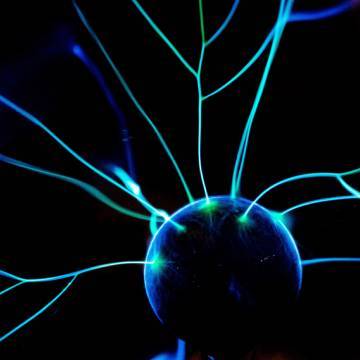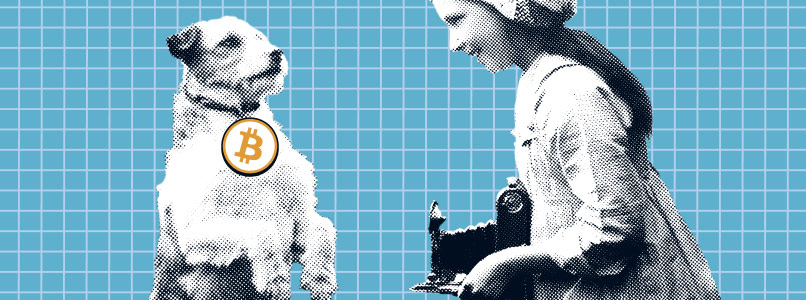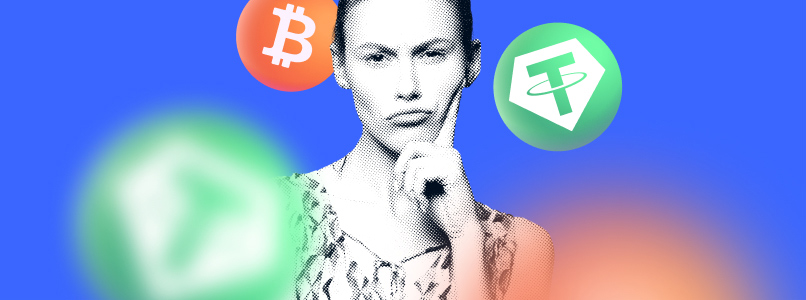Why Blockchain Can Replace Many Things?
Let’s review the three main characteristics of blockchain systems, which are decentralization, the immutability of stored data, and encryption. There are also specific features of working with data within a blockchain, for example, the stored data is available to all participants, but single members of the chain cannot change this data. Both of these are two sides of the mechanism of decentralized data storage.
Read more: The Application of Blockchain in MedTech
 Thus, given that the data cannot be read, a thief wouldn’t be able to steal it, even if it were under his nose. A hacker could also try to destroy the data, but they wouldn’t succeed, because the individual pieces of data cannot be deleted from the blockchain without the majority’s agreement.
Additionally, blockchain participants store part or a full copy of the entire network on their devices. Typically, this is a small amount of data, ranging in some blockchains from 200Mb to 8Gb.
Thus, given that the data cannot be read, a thief wouldn’t be able to steal it, even if it were under his nose. A hacker could also try to destroy the data, but they wouldn’t succeed, because the individual pieces of data cannot be deleted from the blockchain without the majority’s agreement.
Additionally, blockchain participants store part or a full copy of the entire network on their devices. Typically, this is a small amount of data, ranging in some blockchains from 200Mb to 8Gb.
The following blockchain characteristics derive from the decentralization and immutability of the data, without the agreement of a certain percentage of participants. In particular, the blockchain’s ability to validate data due to the participants’ agreement or disagreement, the perpetual storage of any information, and the built-in archiving logic in the system. The command execution feature for blockchain systems did not appear until July 30, 2015, with the launch of Etherium.
Let’s Look at an Example
Let’s look at an example. Suppose a contract for the purchase of 10 tons of aluminum was registered on the blockchain. The contract sets out the terms, the parties’ roles, and the payment procedure. The blockchain participants then sign it, thereby confirming the existence of the contract for the entire system.
Once signed, the contract is permanently on the blockchain without the possibility for modification. When the purchase transaction is made, the contract draws payment from the buyer’s account and sends a command to the seller’s facilities to deliver 10 tons of aluminum to a specific address. The seller then signs the contract for delivery, and his sample is instantly available to the buyer. However, this procedure is only possible if the level of automation is high. For example, if the seller has robots that can load the goods on their own and send them to the address.
The beauty is that blockchain can perform long chains of interaction between several types of documents on its own. The potential for the application of this technology is enormous. For example, the interconnection of tax, customs and other government agencies into a single structure with instant document flow. A bonus will be the cryptographic encryption of documents and the instant access to any state information for any business.
Let’s not forget – blockchain is a big boy and knows how to fill out paperwork without any outsiders. However, for this to happen, it would be necessary to translate all existing types of government and administrative documents into the digital code form. After this procedure is done, the speed of bureaucratic transactions would be comparable to PayPal transfers. This technology is known as smart contracts.

How it would work: you make a request for some kind of reference data. Within two seconds, you get a list of necessary documents, you fill them in, and two seconds later, you get the reference. After that, you send the reference to the right department, such as the tax authorities, for example. In a third of a second, they check if the reference is in the blockchain system and accept it, or they decline it, for example, if the tax office is not satisfied with something. Of course, the procedure of re-receiving the information will only take a couple of seconds.
With the help of blockchain technology, it would be possible to replace many routine functions performed by specialists, such as those related to operational and mechanical activities, information management, and rights allocation.
Read more: About Blockchain
Who or What Can Be Replaced by Blockchain?
It is possible to automate some job functions, but not all need to be completely replaced. The result of such a procedure would be time reduction when working with information in general.
The First Category: Information Management Functions
This includes any routine operations on contracts, such as filling them out, certifying, and registering them.
- Document signatures in any form
- Authentication, registration, validation of account rights within a company or website.
For example: HYPR | The Passwordless Company - Document storage in a single and encrypted database with parallel access for all parties
- Obtaining electronic confirmation of vaccinations.
For example: ShoCard | Personal Identity for the People - Validating the existence of any document within the blockchain network.
For example: Proof of Existence - Copyright management for art or other art items: layouts, logos, articles, songs, drawings.
For example: Verisart - Instant transfer of documents from point A to point B and C, with subsequent access for all responsible parties
- Interdocument interaction of contracts, referencesInformation archiving and storage in encrypted form. For example, preservation of ledgers, fiction and scientific literature, passport or biometric data.
For example: BigchainDB – The blockchain database - Information archiving and storage in encrypted form. For example, preservation of ledgers, fiction and scientific literature, passport or biometric data.
When information is stored in a blockchain, it will always be available. However, with the right knowledge, it is possible to limit access to certain parts of a blockchain to just a number of people. Such blockchain solutions for corporations are implemented by Hyperledger – Open Source Blockchain Technologies, which is listed in Linux Foundation Projects.
The Second Category: Operations of Total or Temporary Assignment of Ownership Rights in Exchange for a Fee
These include exchange, purchase, lease, appropriation and donation operations.
In terms of command execution, validation, and financial transactions, blockchain can automate:
- Hotel, seat, parking, room, and table reservation procedures
- Leasing procedures for rooms, buildings, offices, spaces, parking lots, and arbitrary pieces of land
- Transfer of right procedures for vehicles, buildings, property, and artworks
- Certifications of ownership of physical items.
For example: Everledger | Tech for Good Blockchain Solutions - Purchase of goods in any form as long as loading and delivery procedures are automated
- Large financial transactions without delays and with automatic payment of taxes or duties
The number of transactions that can be automated with blockchain technology can continue until no bureaucratic institutions are left on Earth.
Read more: Blockchain Fails: Projects That Have Ridden off Into the Sunset
It is impossible to automate doctors, marketers, or artists with blockchain, due to the limited technical possibilities of the 21st century. However, the automation of routine operations that no one wants to perform is quite possible. This will allow more time to be spent on more important things.










